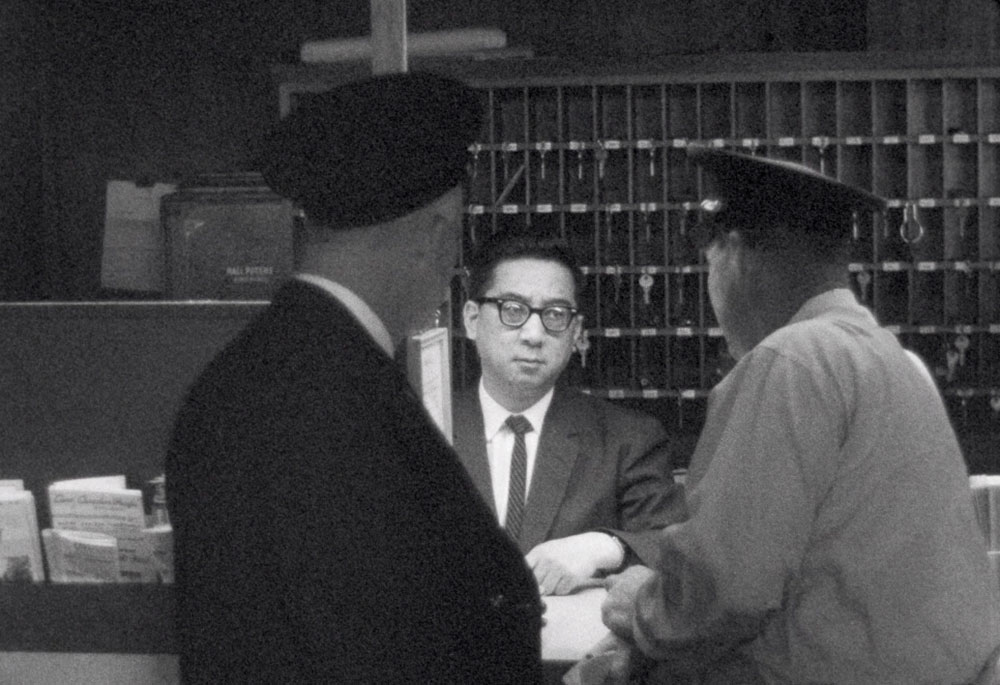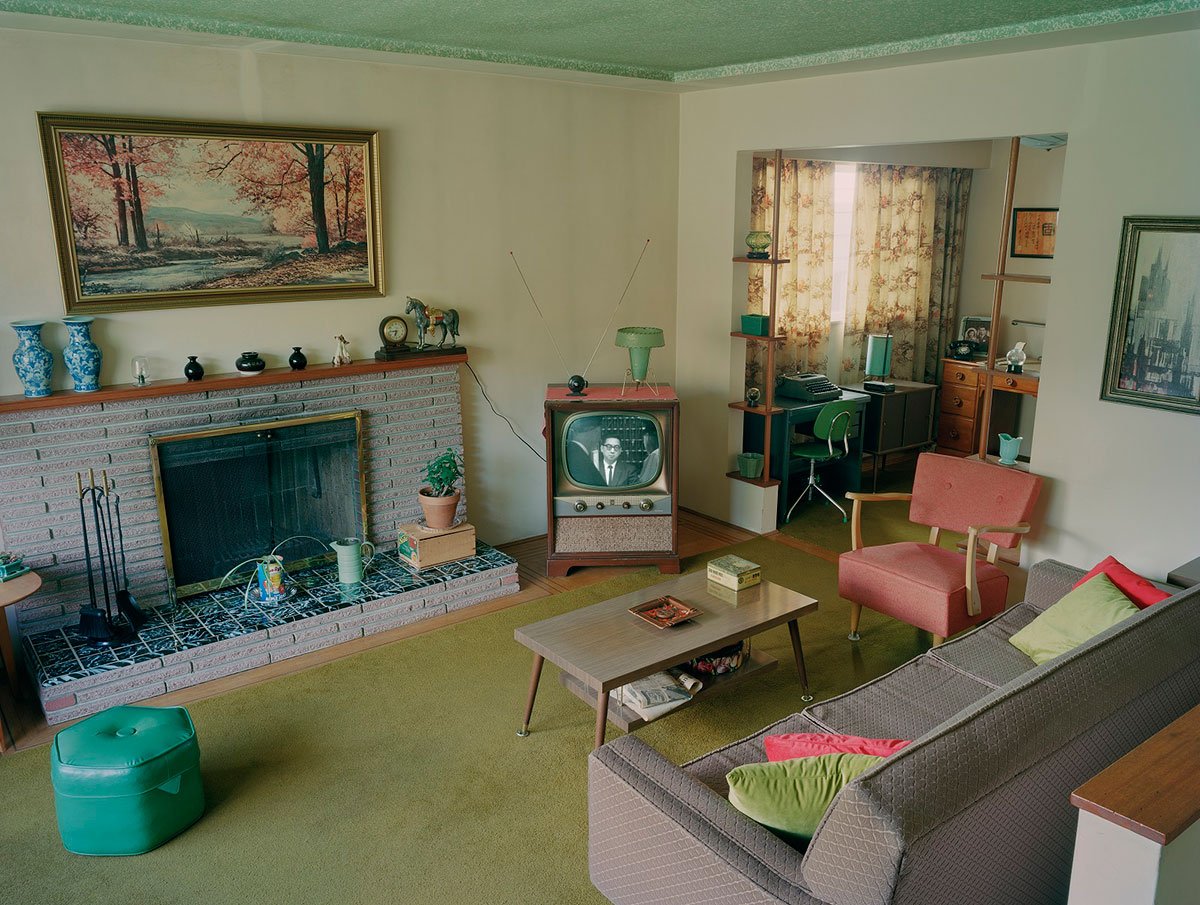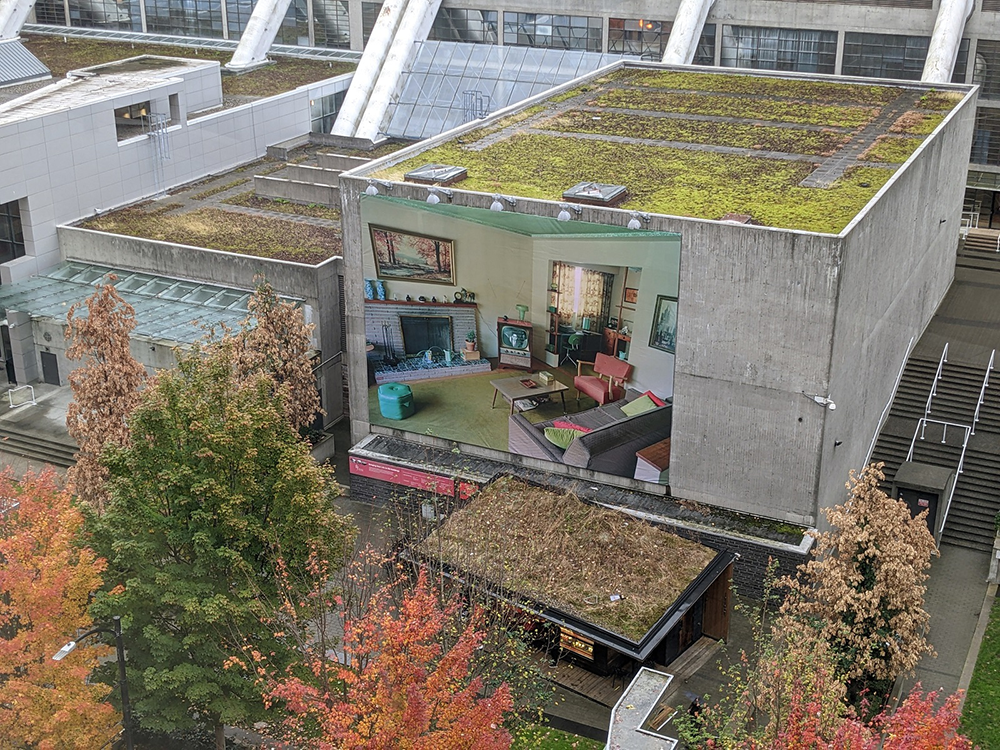The shooting at the hotel was one of those family stories Jeffery Chong had heard over the years about the late grandfather he never got the chance to meet.
It happened on July 2, 1964. A chambermaid was shot in the lobby of the Lotus Hotel on Vancouver’s Abbott Street, where Jeffery’s grandfather Ging Chong worked at the front desk. His grandmother heard about the shooting on the radio and worried about his safety. Thankfully, Ging was unharmed, and made it back to his home in the east side neighbourhood of Collingwood in time for dinner.
Half a century after the shooting, Jeffery was volunteering at the CBC Archives when he had the idea to check whether the incident might’ve been captured by journalists. Sure enough, with the help of an archivist, they found a 16mm reel from that day labelled with the name of the hotel, and loaded it into the player.
“For four or five seconds, there was a shot of this Chinese man who looked like he was being questioned by two police officers,” said Jeffery.
It was indeed him. Jeffery has always had an interest in researching family history, but even though the Chongs had been in Canada since the early 1900s, it was hard to find accurate records of people of colour in English-language collections. However, one area of documentation that racialized people often ended up in was crimes. As a result, thanks to the reporting of the shooting, Jeffery found himself face to face with his grandfather in the archives.

Jeffery digitized the footage and surprised the whole family, who had no idea that the news report existed. He even found a mention of the incident in the Vancouver Sun that nodded to his grandfather’s heroics: he made an attempt to chase down the shooter.
By 2022, Jeffery’s grandmother had died. The family decided to sell the East Vancouver house. But before the property left their hands, Jeffery, a media artist, decided to stage a special project.
He staged the living room as it would’ve been in 1964 — from the furniture down to the decor on the mantelpiece — with the TV switched on to the CBC evening broadcast where his grandfather briefly showed up on the screen at 6:45 p.m.
Jeffery captured the scene on large-format film. The picture has been printed on a massive sheet of vinyl, hanging from the side of the CBC building in downtown Vancouver, inviting all to have a peek inside the Chongs’ living room on that summer evening.
The wall on the CBC building, right behind a JJ Bean coffee stand, is literally called the Wall. It features a new project every year, often touching on the city’s urban transformation, from more obvious images like a condo tower erupting behind an old house to curiosities like the photo of a vintage neon sign by McGavin’s bakery of a giant hand holding a loaf of bread.
The space is presented by the Vancouver Heritage Foundation and CBC, and the hosts couldn’t be more fitting for Jeffery’s picture — a conversation between an evening broadcast and the home of a man who happened to show up on TV.
There’s a lot of local history within the frame. If you’re a boomer who grew up in a working-class Vancouver family, you almost definitely lived in a house like the Chongs'. They were mass-produced, and have come to be known as the Mid-Century Builder. They predated the better-known Vancouver Special, but are just as common across the city. The Mid-Century Builder has a hipped roof and a concrete flight of stairs that leads up to the main floor on the second storey. Some real estate agents today call them bungalows. Because of how boxy they are, they’ve also been called strawberry boxes.
When the Chongs bought theirs in 1959, it was brand new. There were eight family members living in the house at one point: Jeffery’s great-grandmother, his grandparents, his grandfather’s siblings, his father and his siblings. The family attempted to renovate the basement into a suite but a neighbour reported them to the city. Basement suites wouldn’t be legalized until the late-1980s, with racist attitudes about immigration and people of colour “crowding" neighbourhoods playing a part in that nimbyism.
Collingwood has been known as a busy SkyTrain stop since 1985, but it’s had train tracks running through it for almost a century before that. Growing up in the neighbourhood’s industrial years, Jeffery’s father remembers the house rattling from the noise of passing trains.
As for Jeffery’s earliest memories of the house: “My grandma making macaroni and Spam in chicken soup.”
When he began to create a 1964 living room for his project, it helped that everything in the house was almost original to the time that it was built.
“There’s the original gas stove, only one telephone jack and all the plugs are two-pronged,” he said.
He became a domestic archaeologist. There were objects from the places his family had called home before moving to Collingwood. They had previously lived in Vancouver’s Mount Pleasant neighbourhood and before that, in Duncan on Vancouver Island. Before that, they lived in Victoria, where Jeffery’s great-grandfather had arrived as a merchant from southern China sometime in the early 1900s.
Jeffery was able to find almost every 1960s-era object he needed kicking around in the house. There was a tin can that once held SunRype apple juice, the kind that his grandparents saved and repurposed to hold houseplants. There were accoutrements of a Chinese-Canadian household, such as a box of almond cookies and framed poetry in calligraphy.
But there were also paintings of landscapes that would’ve been considered a fancy western thing, redeemed with points his grandfather faithfully collected at gas stations and supermarkets, to make the space feel “sophisticated, even if he couldn’t afford it,” said Jeffery. “I think they wanted to fit in. They were the first generation to leave that Chinatown community. Unfortunately, that was the reality: their only way to survive was if they tried to drop a little bit of their Chinese identity.”

Historical recreations like Jeffery’s have been the interest of a few local artists, who art critics have loosely referred to as the Vancouver School.
Douglas Coupland and Stan Douglas are among them, both of whom launched projects this year. Coupland recreated 1997 North Shore suburbia for his Rabbit Lane series of photographs, while Douglas recreated the 2011 Stanley Cup riots.
But as for the 1960s, so much of the visual archive of racialized spaces are limited to street photography capturing Chinatown neon and street life, for example. The peek into the cozy Chong residence offers a different satisfaction, the kind glimpsed in private home movies and family albums. The living room is a non-white, non-Betty Crocker domestic interior, and offers a Where’s Waldo for the audience to identify objects that hint at the family’s questions of belonging.
You can investigate the giant work yourself at CBC Vancouver’s wall until late summer 2023. It’s titled Home Edition, a play on the name of the CBC news broadcast that captured Jeffery’s grandfather.
But what of the fate of the Chong house, home to four generations of the family? “Somebody’s going to buy it and it’s going to be torn down,” said Jeffery.
His guess, judging by nearby houses bundled up like Monopoly properties, is that the whole block is going to go with it. But with his photography project, he’s made his peace with the goodbye.
“It’s an honouring of the history of the house and how the space was used when my grandfather was alive,” he said. “Some people have already come up to me and said it reminds them of the house they grew up in or their grandparents’ house. I’m glad that it can span beyond my own personal take on it.” ![]()
Read more: Rights + Justice, Art, Municipal Politics
















Tyee Commenting Guidelines
Comments that violate guidelines risk being deleted, and violations may result in a temporary or permanent user ban. Maintain the spirit of good conversation to stay in the discussion.
*Please note The Tyee is not a forum for spreading misinformation about COVID-19, denying its existence or minimizing its risk to public health.
Do:
Do not: